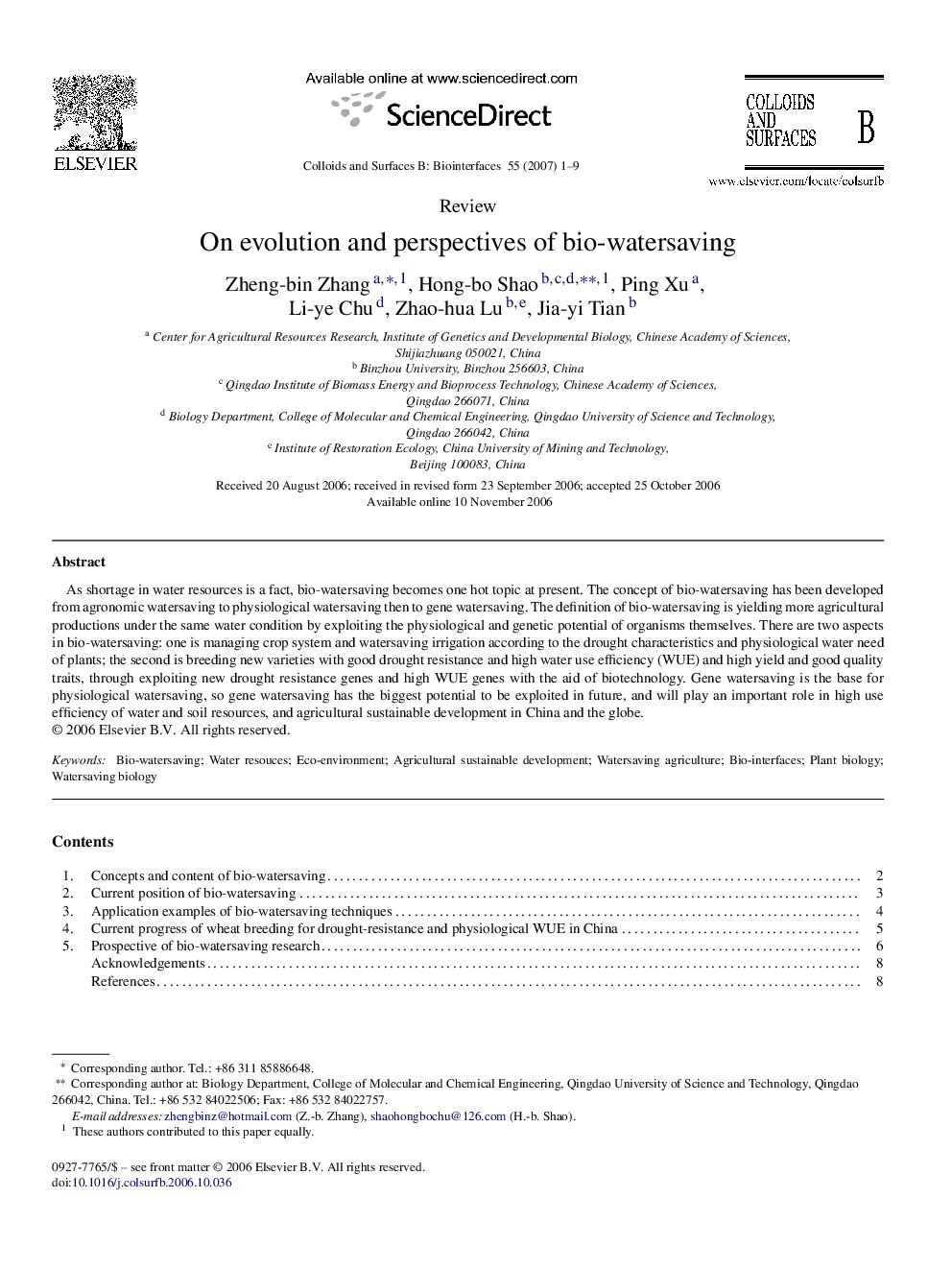| Article ID | Journal | Published Year | Pages | File Type |
|---|---|---|---|---|
| 602788 | Colloids and Surfaces B: Biointerfaces | 2007 | 9 Pages |
As shortage in water resources is a fact, bio-watersaving becomes one hot topic at present. The concept of bio-watersaving has been developed from agronomic watersaving to physiological watersaving then to gene watersaving. The definition of bio-watersaving is yielding more agricultural productions under the same water condition by exploiting the physiological and genetic potential of organisms themselves. There are two aspects in bio-watersaving: one is managing crop system and watersaving irrigation according to the drought characteristics and physiological water need of plants; the second is breeding new varieties with good drought resistance and high water use efficiency (WUE) and high yield and good quality traits, through exploiting new drought resistance genes and high WUE genes with the aid of biotechnology. Gene watersaving is the base for physiological watersaving, so gene watersaving has the biggest potential to be exploited in future, and will play an important role in high use efficiency of water and soil resources, and agricultural sustainable development in China and the globe.
